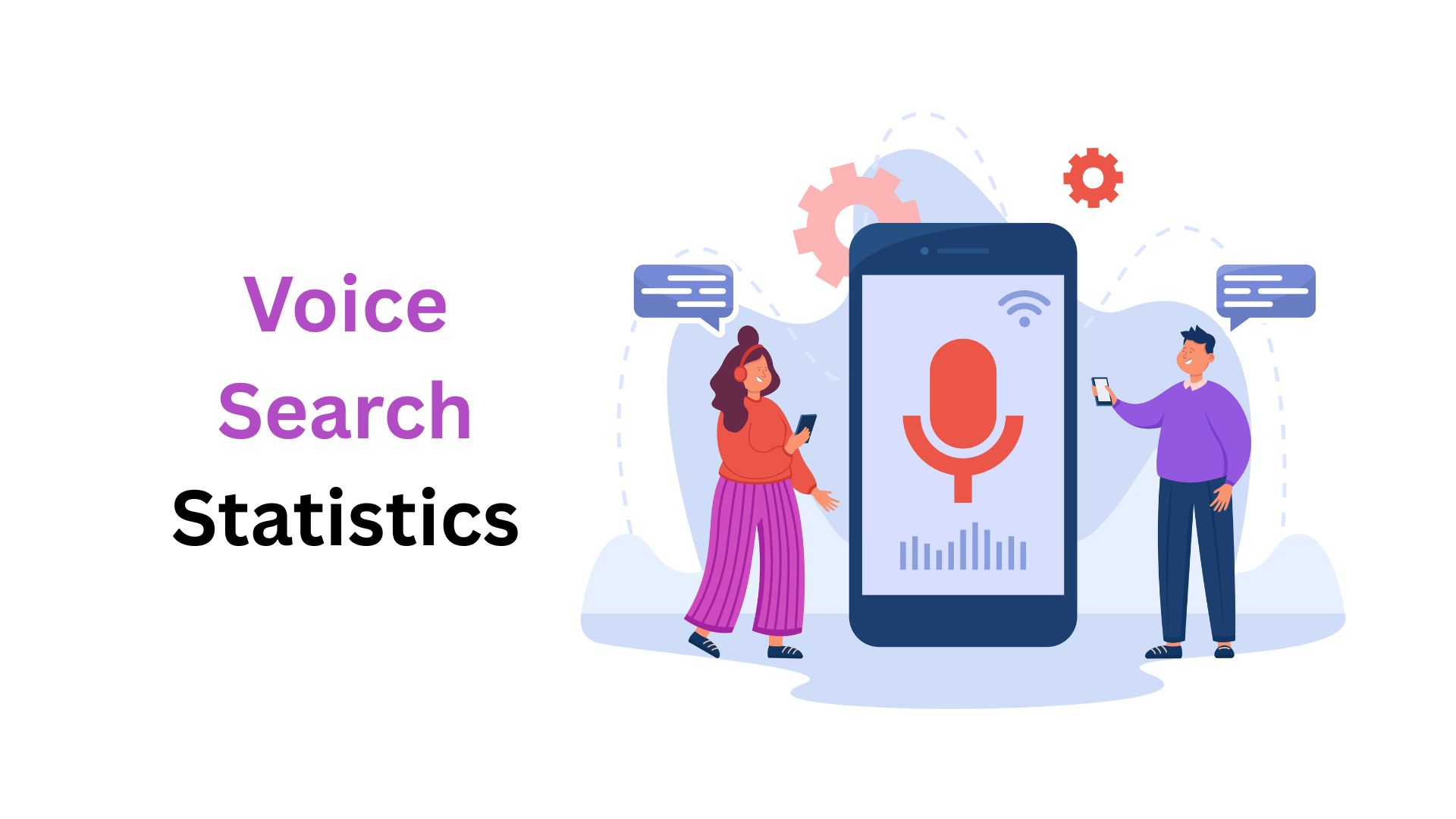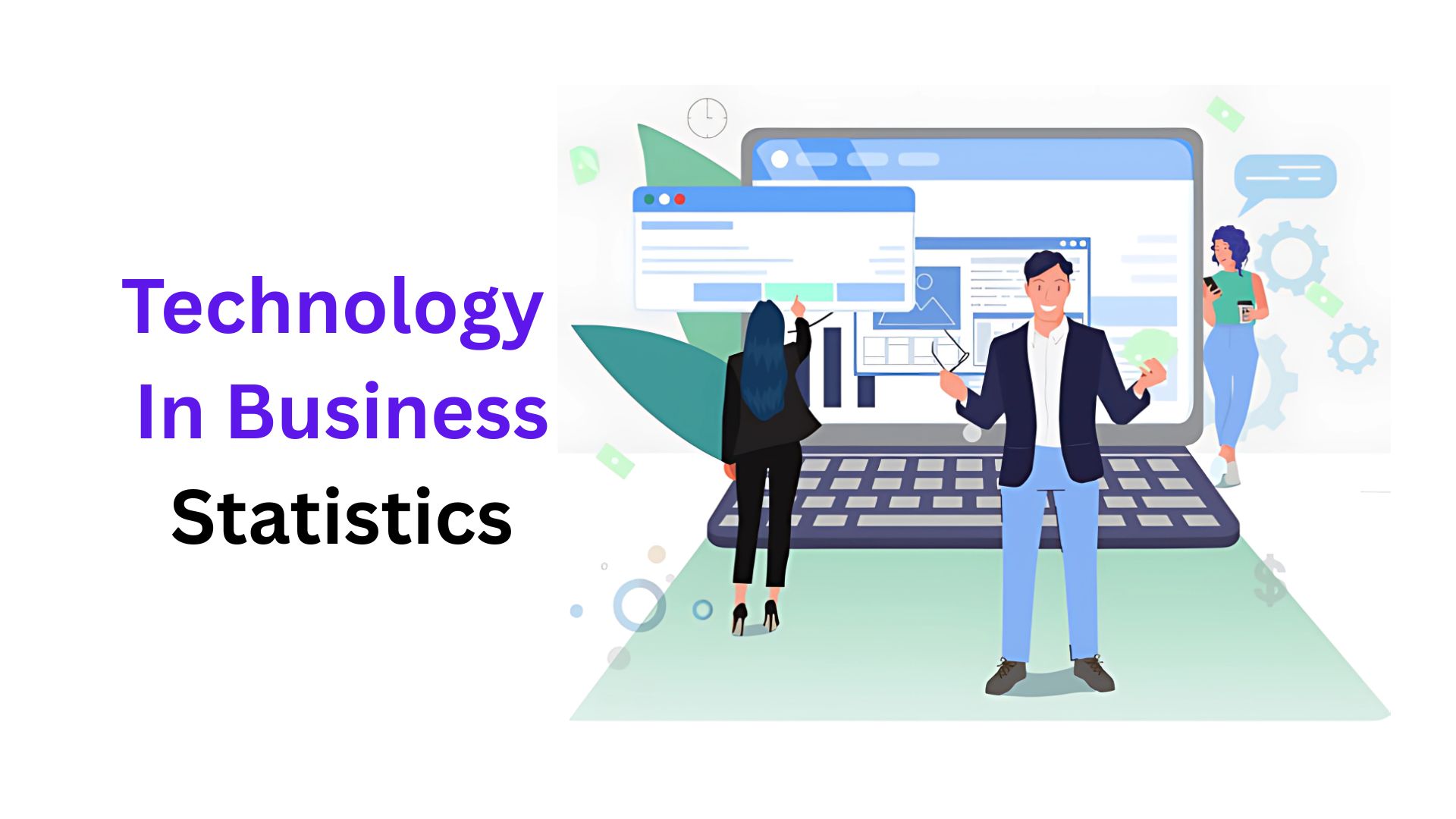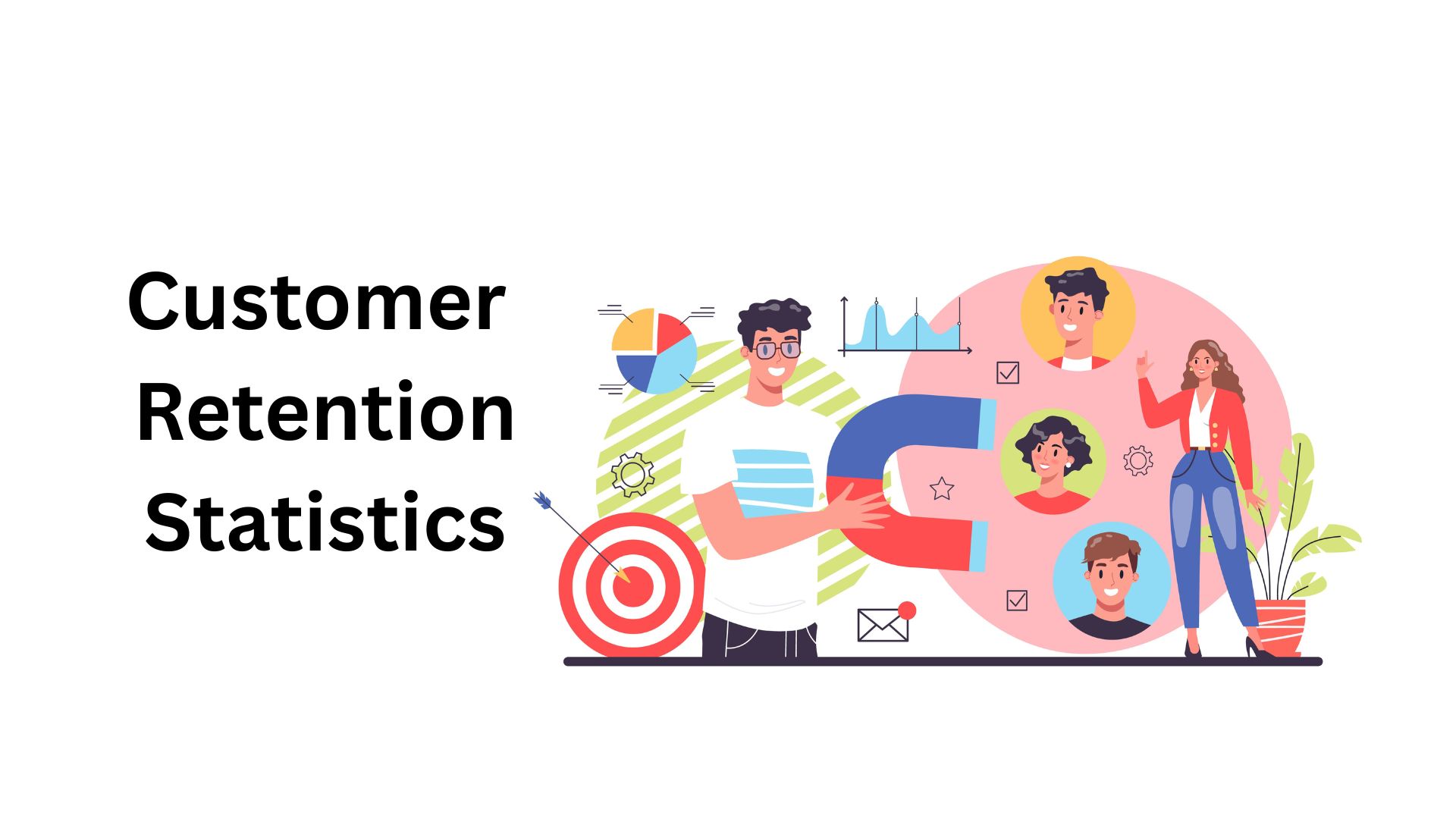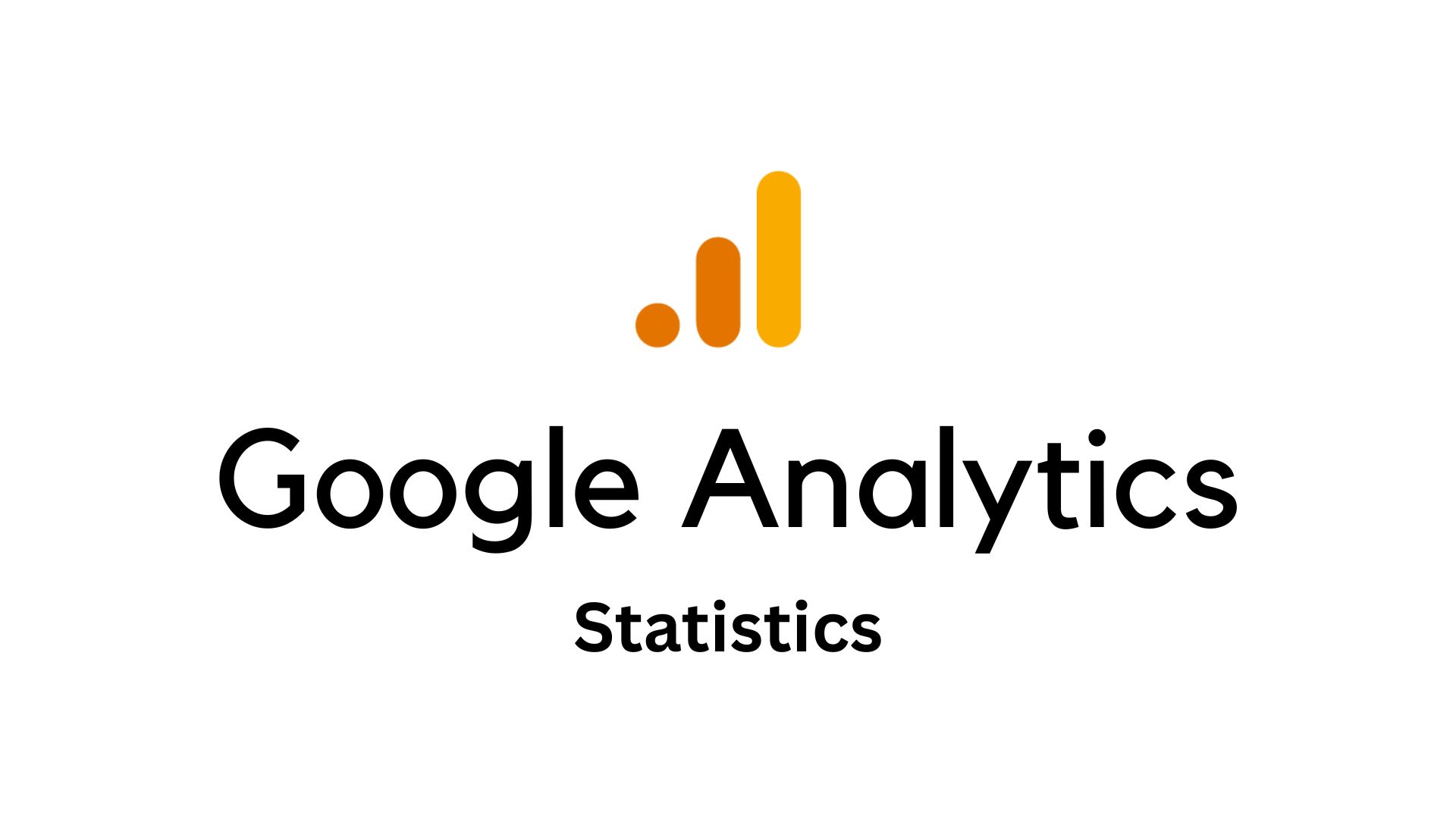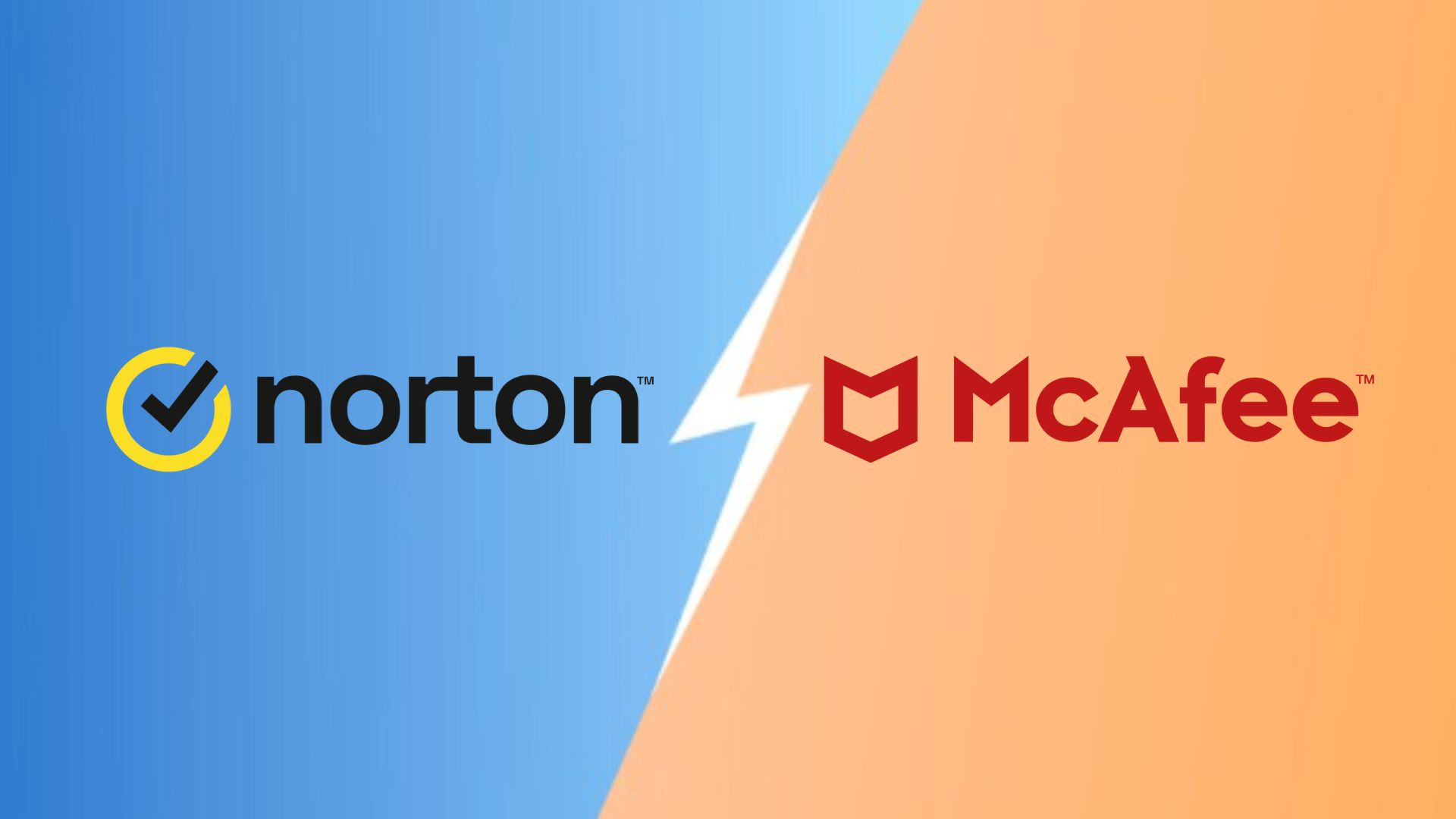AI Replacing Jobs Statistics By AI’s Impact on Job, AI Skills and Facts
Updated · Dec 12, 2024
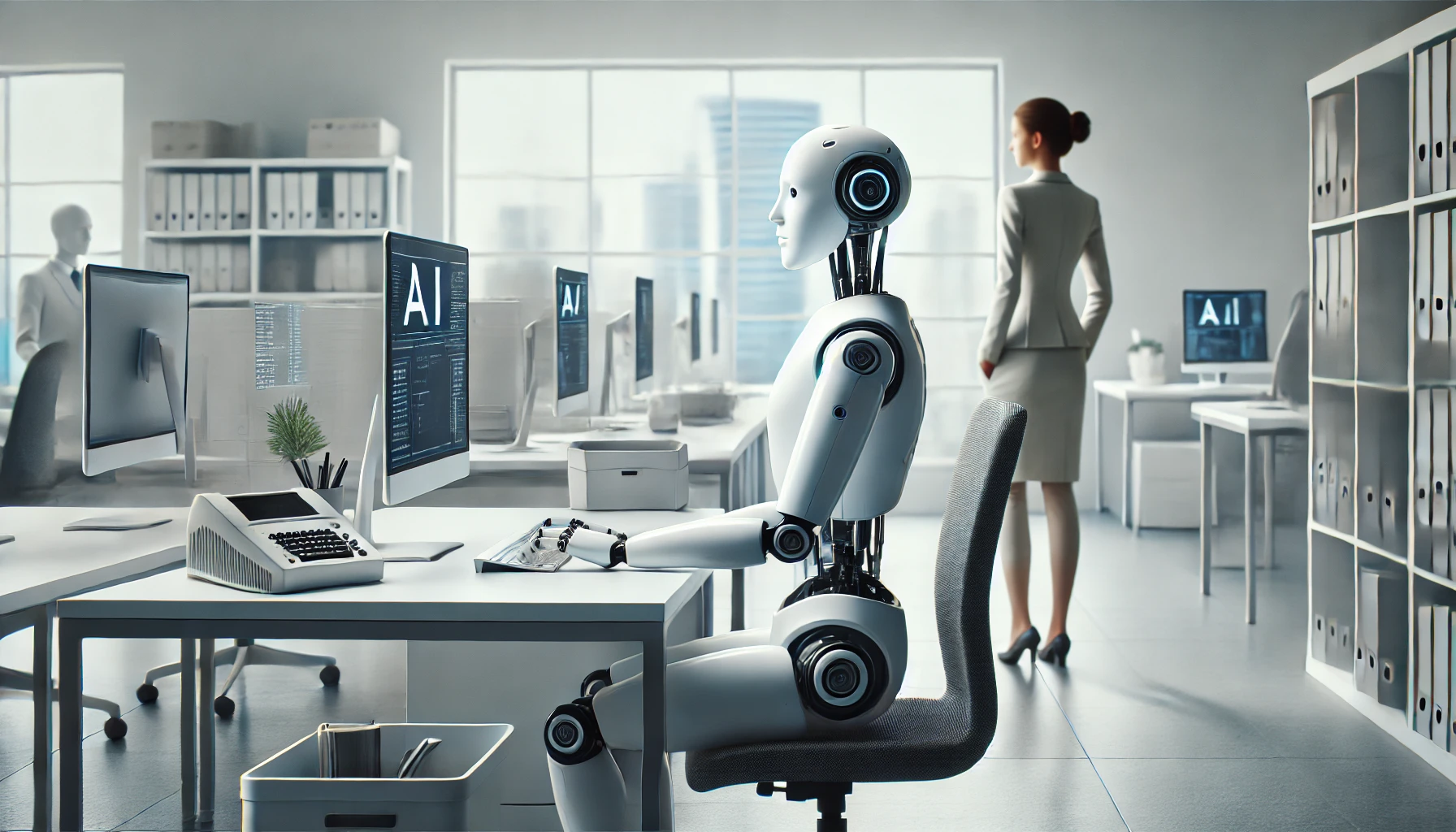
Table of Contents
- Introduction
- Editor’s Choice
- AI’s Impact on Jobs Statistics
- Global AI Market Growth
- Careers Impacted by AI Statistics
- Responses to AI Job Displacement Threat
- Artificial Intelligence Hourly Rates Pricing
- Fastest-Growing Technology Skills
- AI Replacing Work Tasks Statistics
- AI in Various Job Industries
- Preference For Workers with AI Skills
- LinkedIn Member’s Top Skills With AI Aptitudes
- Talent Change Due to AI By Region
- AI Talent Concentration By Region
- Challenges With AI Tools
- AI Usage at Work
- Salaries of IT Executives
- Most Used AI Search Engine Tool
- Jobs AI Can’t Replace Statistics
- Most Paying Technology Among Developers
- Conclusion
Introduction
AI Replacing Jobs Statistics: The landscape of work is undergoing a profound transformation driven by artificial intelligence. As technology evolves at an unprecedented pace, AI is reshaping industries, job markets, and skill requirements globally.
As we go forward, we will learn about the Stats On AI Replacing Jobs and how AI is not just a technological trend but a fundamental shift in how we approach work, skills, and professional development. Understanding these trends is crucial for professionals, leaders, and students navigating the emerging AI-driven economic ecosystem.
Editor’s Choice
- By 2030, AI is projected to pump USD 19.9 trillion into the global economy, according to IDC Research.
- 98% of business executives view AI as essential within their firms, highlights IDC Research.
- A significant 83 million jobs are expected to be lost due to AI in the next five years, as per Statista.
- 300 million jobs could be displaced worldwide by AI by 2030, as Goldman Sachs reports.
- AI will contribute 3.5% to the global GDP by 2030, according to forecasts by IDC Research.
- McKinsey predicts that by 2030, 70% of firms will be utilizing AI technologies.
- Statista forecasts that 69 million new jobs will be generated following the AI transition.
- AI has the potential to automate 70% of workforce tasks, McKinsey estimates.
- 83 million jobs could be lost due to the introduction of technology, as stated by the World Economic Forum.
- The World Economic Forum also estimates that 69 million new jobs will emerge due to technology advancements.
- The unemployment rate in Europe and the US could rise by 12 million jobs due to AI, according to McKinsey.
- The green economy is expected to create 7 million jobs, as per the World Economic Forum.
- 46% of office and administrative tasks are susceptible to automation, Statista reports.
- 25% of routine tasks are already automated by AI, Goldman Sachs reports.
- Statista predicts that 23% of current jobs will undergo changes by 2027 due to AI.
- 60% of jobs in advanced economies risk replacement by AI, while only 26% of jobs in low-income countries face similar risks.
- 71% of US workers express concern that AI may affect human resources decision-making.
- 30% of US workers fear they may be replaced by AI, according to recent surveys.
- 83% of companies believe demonstrating AI skills can help employees retain their positions.
- India saw a 263% change in talent due to AI from 2016 to 2023.
- C/C++ is the fastest-growing skill with a 594.45% growth rate in recent years.
- 81.7% of developers are utilizing ChatGPT, highlighting its widespread adoption.
- The National Library of Healthcare notes AI could enhance the effectiveness of healthcare professionals by reducing administrative burdens.
- LinkedIn job adverts mentioning ChatGPT or GPT saw a 21-fold increase over the year to November 2023.
- The World Economic Forum identifies agriculture, logistics, and teaching as sectors likely safe from AI replacement.
AI’s Impact on Jobs Statistics
- Goldman Sachs via BBC predicts that AI may replace 300 million jobs worldwide, representing 9.1% of all global employment.
- MIT / Boston University forecast that by 2025, AI and automation could replace two million manufacturing jobs.
- McKinsey estimates that by 2030, 14% of the workforce, equating to 375 million workers, will need to shift careers due to AI impacts.
- PwC reports that 75% of CEOs believe generative AI will substantially alter their business practices within three years, emphasizing the need for new skills and improved cybersecurity.
- According to ARXIV, 80% of the US workforce might see at least 10% of their job tasks affected by large language models.
- The World Economic Forum suggests that more than 7.5 million data entry jobs will be eliminated by 2027, marking the largest anticipated job loss in any single profession.
- Resume Builder finds 44% of companies using or planning to use AI anticipate layoffs by 2024, although only 21% are certain of it.
- The Center for Economic and Policy Research (CEPR) states 47% of US workers could lose their jobs to automation, including AI and other technologies, within the next decade.
- McKinsey also notes that automating even half of the current global work tasks could take upwards of 20 years, hindered by various legal, political, and technological barriers.
Global AI Market Growth

- The global Artificial Intelligence market is projected to expand from USD 250.1 billion in 2023 to USD 3,527.8 billion by 2033, with a compound annual growth rate (CAGR) of 30.3%.
- In 2023, North America held a dominant market share with revenues of approximately USD 97.25 billion.
- The Software segment captured 43.7% of the AI market share in 2023.
- Over 64.6% of the AI market in 2023 was dominated by Cloud-based solutions.
- Machine Learning technology accounted for 41.1% of the AI market in 2023.
- The Healthcare application led the AI market with a share of 15.9% in 2023.
- In China, 58% of companies are actively deploying AI technologies, and 30% are assessing their integration.
- In the United States, 25% of companies have adopted AI, with an additional 43% exploring its potential applications.
- The manufacturing sector could see economic gains of USD 3.8 trillion by 2035 due to AI adoption, according to Accenture.
- By 2025, it is projected that the AI sector will employ up to 97 million people globally.
- Netflix generates approximately USD 1 billion annually from AI-powered personalized recommendations.
- 48% of businesses currently employ AI technologies to harness big data.
- 38% of medical providers utilize AI for computer-aided diagnostics.
- AI is expected to contribute a 21% net increase to the United States GDP by 2030.
- A Forbes Advisor survey shows that 64% of businesses expect significant productivity enhancements from AI.
- The self-driving car industry is forecasted to achieve a market valuation exceeding USD 600 billion within the next five years.
- 83% of companies consider AI critical for their strategic planning.
- In 2023, over 25% of investments in American startups were directed towards AI-related companies.
- 24% of business owners express concerns about AI’s potential effects on their website traffic.
- OpenAI is seeking a valuation nearing approximately USD 90 billion as of October 2023.
- 20% of generative AI users are in the 25- to 34-year-old age group.
Careers Impacted by AI Statistics
- Two-thirds of all jobs in the US and Europe are exposed to some level of automation, highlighting a potential shift in task allocation due to AI technologies.
- 40% of global jobs are at risk of exposure to AI, indicating significant implications for the worldwide workforce.
- In advanced economies, 60% of jobs could be impacted by AI, with effects ranging from beneficial to detrimental outcomes for employees.
- The most AI-exposed jobs, comprising the top 25% in automation potential, employ 19% of the workforce.
- 27% of workers holding a bachelor’s degree or higher are in jobs most susceptible to AI, compared to just 3% of those with less than a high school education, 12% for high school graduates, and 19% for those with some college experience.
- Workers in sectors most exposed to AI earn an average of USD 33.3 per hour, which is USD 13.3 per hour more than those in sectors least exposed to AI, who earn an average of USD 20 per hour.
- The potential widespread adoption of current automation technology could affect half of the global economy, impacting around 1.2 billion employees and involving approximately USD 14.6 trillion in wages.
Responses to AI Job Displacement Threat
- In the next three years, 120 million workers will need retraining due to changes in business demands driven by AI.
- By 2027, 42% of employers plan to prioritize training their workers in AI.
- Companies are allocating 9% of their reskilling budgets specifically for training in AI and big data.
- AI is the top training priority for companies with more than 50,000 employees, especially in industries such as IT services, media and entertainment, telecommunications, and electronics.
- Currently, 30% of workers fear that their jobs will be replaced by technology, including AI, by 2025.
- Additionally, 39% of workers are concerned about not receiving adequate training in new technologies.
- Furthermore, 24% of workers worry that AI will make their jobs obsolete.
- In contrast, 43% of workers expect their jobs to change significantly due to AI within the next five years.
- Only 32% of employees feel that their company has been transparent about its use of AI.
- A majority, 55% of workers, believe that AI will eliminate more jobs than it creates.
- However, only 34% of organizations are actively reskilling their employees to work with new AI tools.
- Among digital marketers, 81.6% anticipate that content writers will lose their jobs to AI.
- Concerns about the negative impact of AI on future careers are prominent among young people aged 18-24, with 52% expressing this worry.
- Young workers are 129% more likely to fear that AI will make their jobs obsolete compared to older workers aged 65 and over.
- There are also notable differences in concern levels by race; 38% of Asian workers worry about AI making their jobs obsolete, compared to just 19% of white workers.
- Additionally, 30% of workers earning under $50,000 per year are concerned that AI will soon make their jobs obsolete.
- Among fully remote workers, 54% believe their jobs will be disrupted by AI, in contrast to 38% of in-person workers.
- Lastly, 51% of workers in advertising and marketing predict changes to their jobs due to advancements in AI.
Artificial Intelligence Hourly Rates Pricing
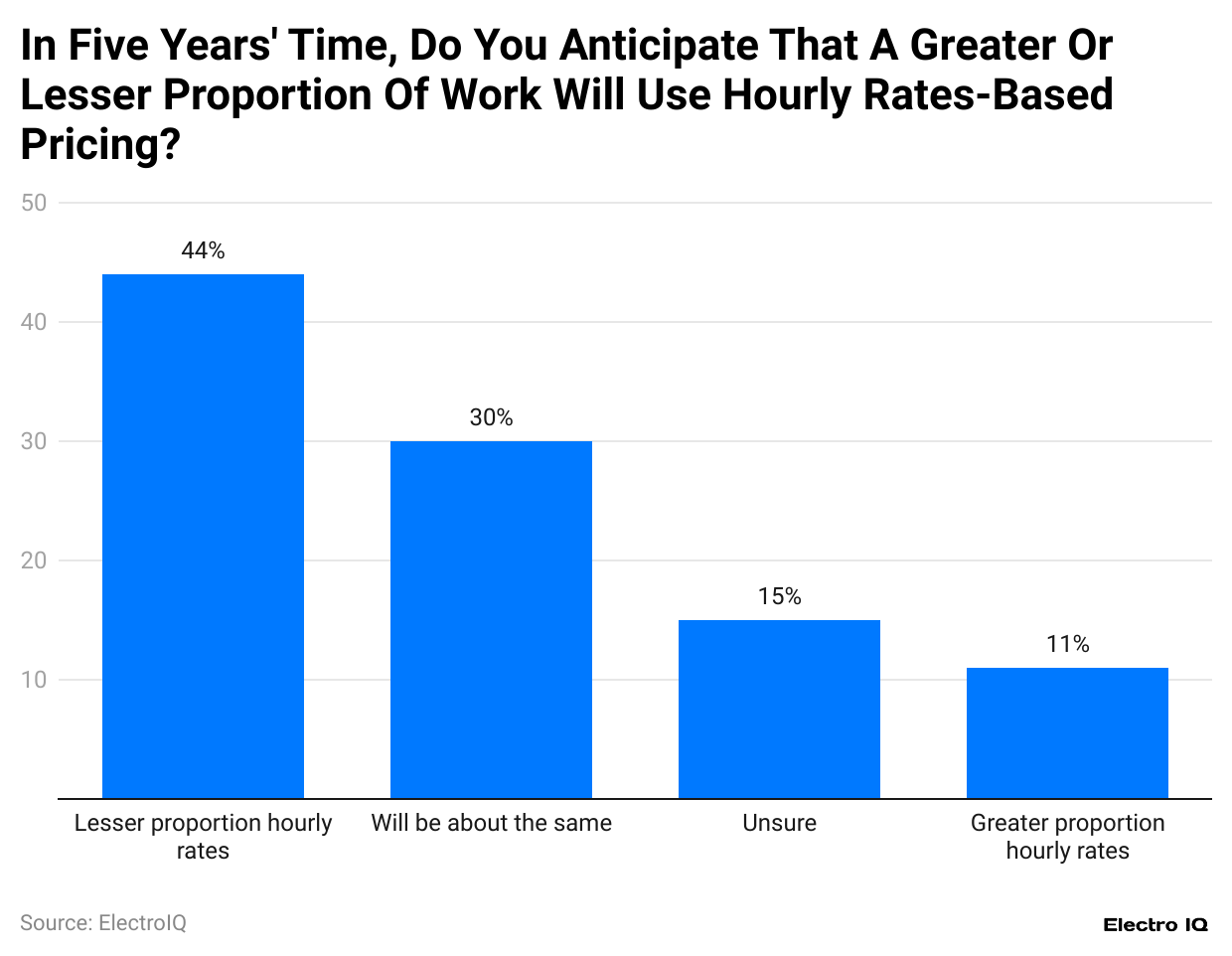
(Reference: statista.com)
- Stats On AI Replacing Jobs show that 44% of respondents have a less proportional hourly rate.
- 30% of respondents find that the price of AI models will be about the same as before.
- 15% of respondents are still determining the price of AI models.
- 11% of respondents find that a greater proportion of hourly rates will apply to AI model pricing.
Fastest-Growing Technology Skills
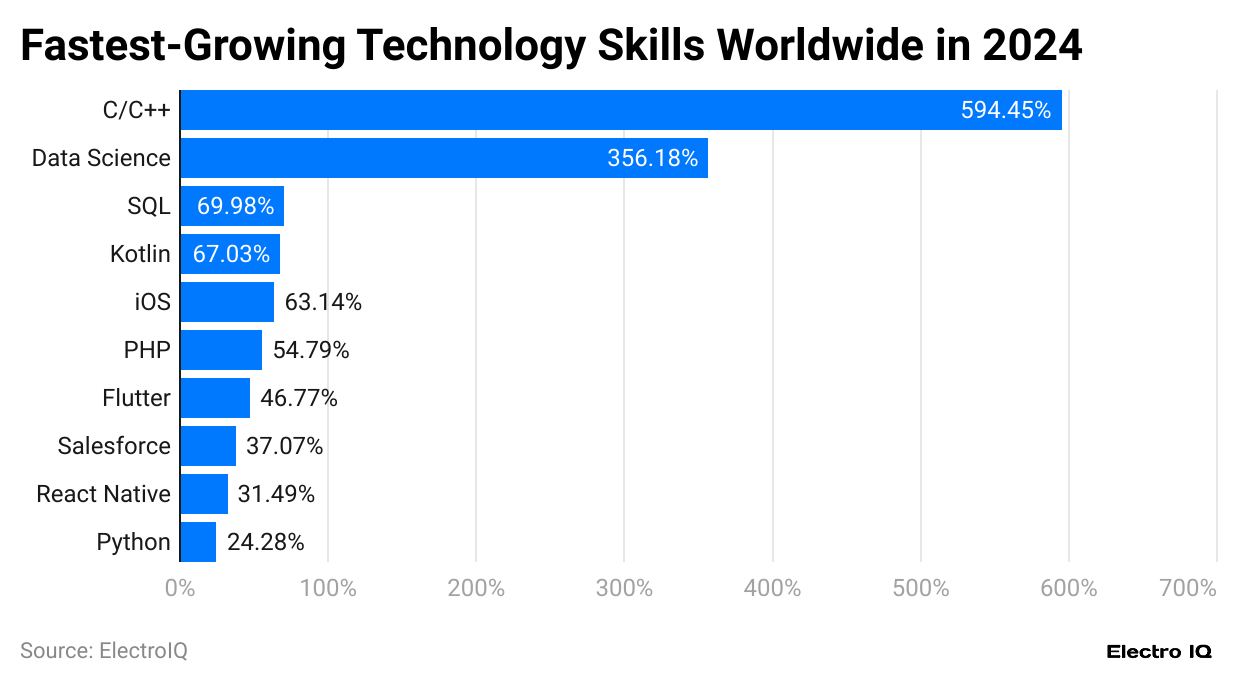
(Reference: statista.com)
- C/C++ emerged as the fastest-growing technology skill worldwide in 2024 on the DevSkiller platform, with an impressive growth rate of 594.45%.
- Data science experienced significant growth, with a rate of 356.18%.
- SQL grew by 69.98%, making it the third fastest-growing technology skill.
- Kotlin saw a growth rate of 67.03%.
- iOS skills grew by 63.14%.
- PHP experienced a growth rate of 54.79%.
- Flutter’s growth rate stood at 46.77%.
- Salesforce grew by 37.07%.
- React Native’s growth rate was 31.49%.
- Python grew by 24.28%.
AI Replacing Work Tasks Statistics
- 34% of all business-related tasks are currently performed by machines, as reported by the World Economic Forum (WEF).
- 66% of tasks remain human-operated, reflecting a minor decrease in non-human task performance.
- 25% of all work tasks could potentially be automated by AI, according to Goldman Sachs.
- Administrative roles have 46% of their tasks susceptible to AI automation, while legal jobs have 44%.
- In the construction and maintenance sectors, only 6% and 4% of tasks, respectively, could be performed by AI.
- 19% of US workers might see over half of their tasks affected by AI, specifically systems akin to OpenAI’s GPT-4.
- Tasks highly susceptible to AI automation are considered important in 77% of all jobs, as stated by Pew Research.
- 42% of tasks are predicted to be fully automated by 2027, according to the WEF, down from a previous prediction of 47%.
- Data processing and information tasks are highly automatable, with 65% possibly being fully automated by 2027.
- Conversely, only 35% of tasks involving reasoning and decision-making are expected to be automated by 2027.
AI in Various Job Industries
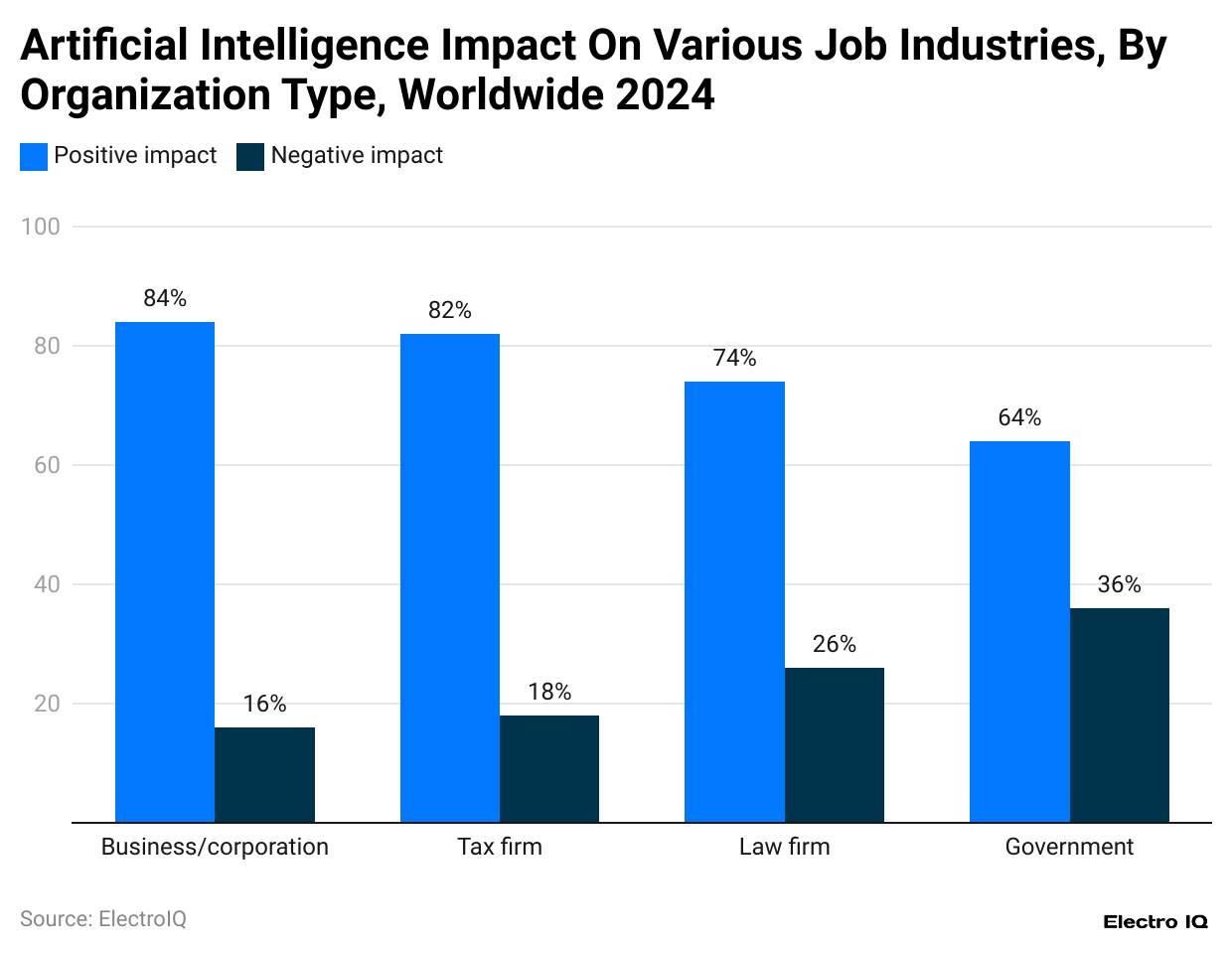
(Reference: statista.com)
- Stats On AI Replacing Jobs show that business corporations have the most positive impact, according to 84% of respondents.
- According to respondents, the government has a 36% negative impact.
Preference For Workers with AI Skills
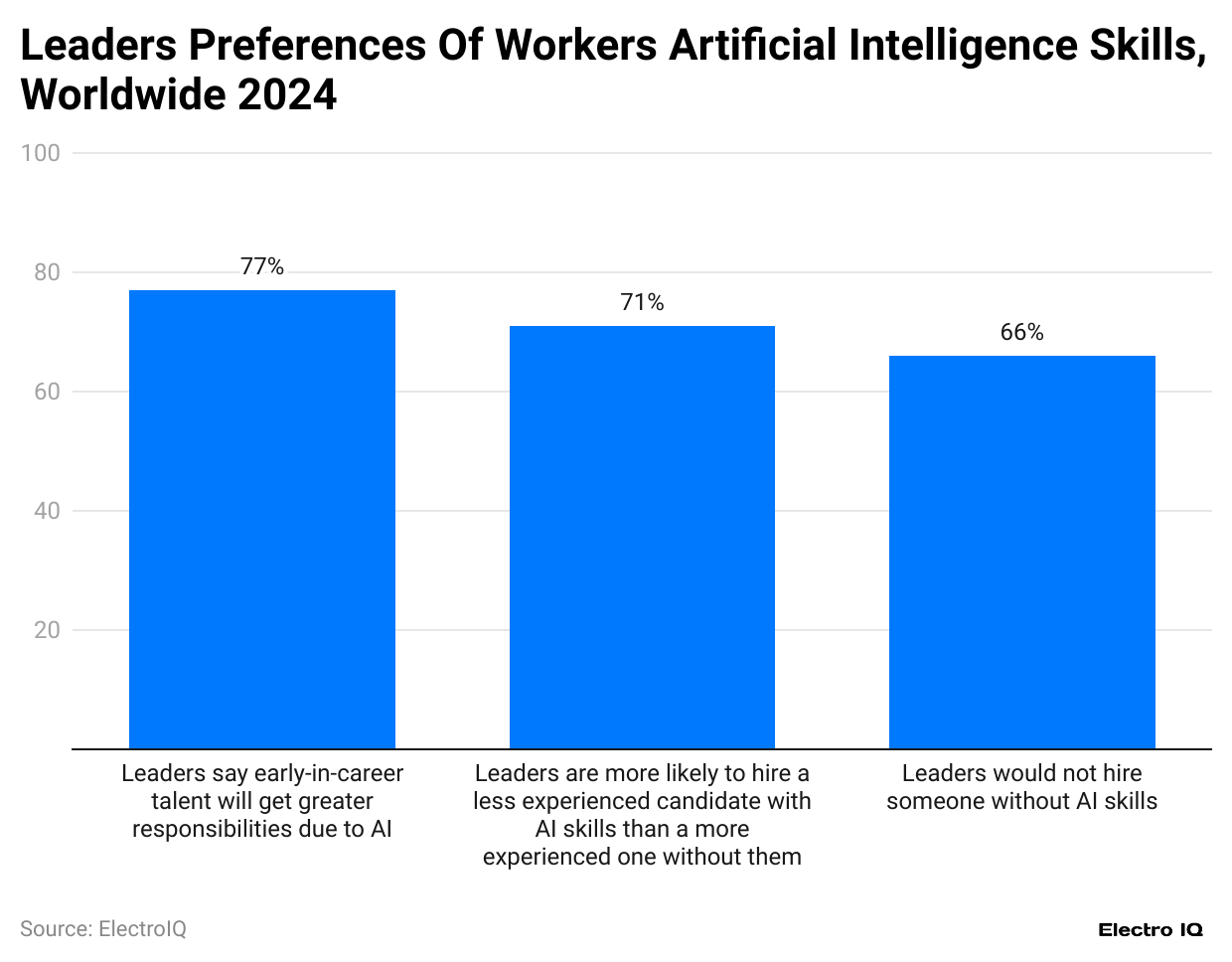
(Reference: statista.com)
- Stats On AI Replacing Jobs show that according to 77% of respondents, leaders in the early career talent will get better responsibilities due to AI.
- 71% of respondents feel leaders are expected to hire less experienced candidates with more AI skills.
- 66% of respondents feel leaders will only hire someone with AI skills.
LinkedIn Member’s Top Skills With AI Aptitudes
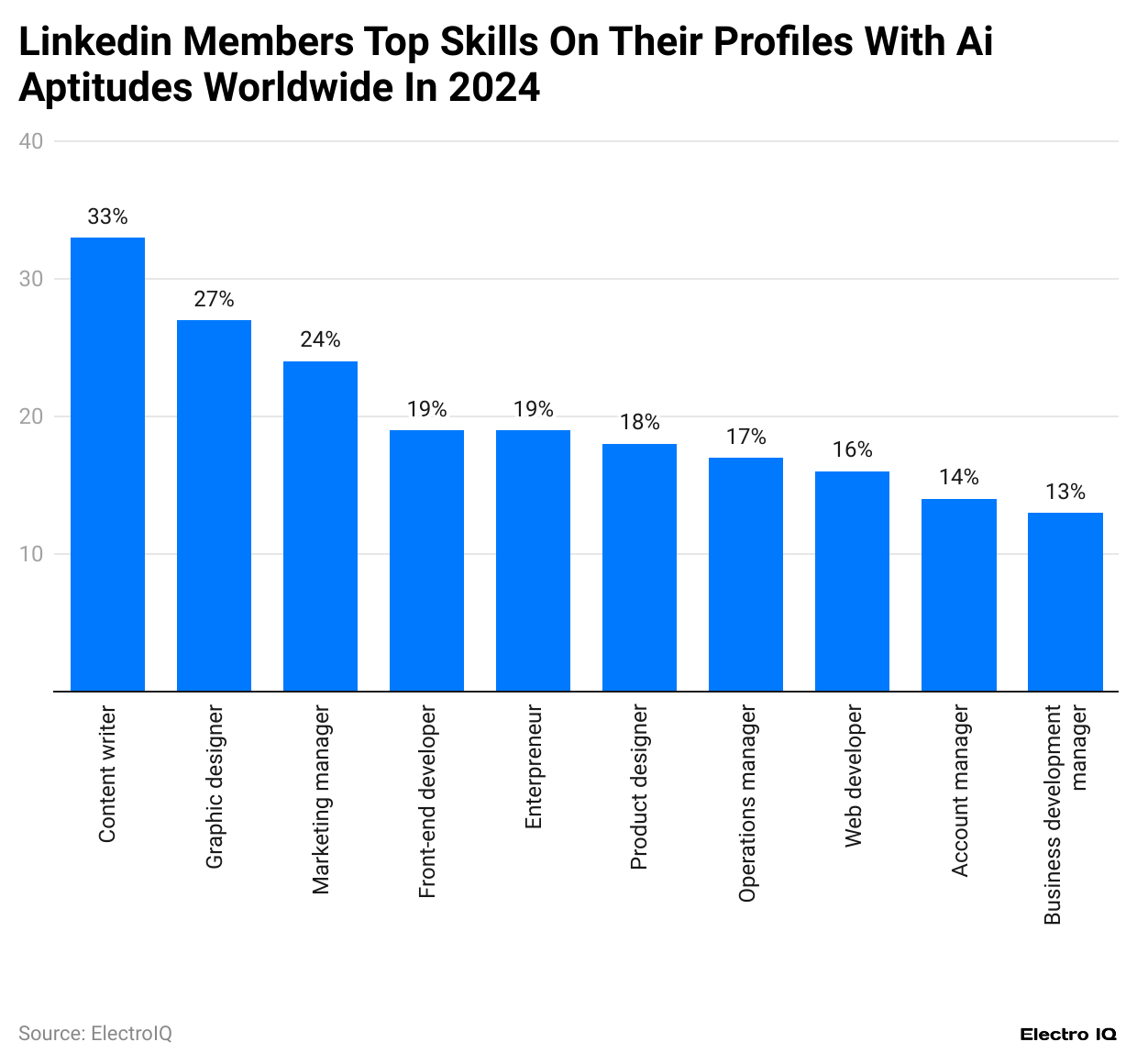
(Reference: statista.com)
- Content writer is the top occupation with AI skills, as indicated by 33% of LinkedIn members worldwide in 2024.
- Both graphic designer and designer occupations have been selected by 27% of members for their AI skills.
- Marketing Manager is selected by 24% of LinkedIn members for AI aptitudes.
- Front-end Developer and Entrepreneurship are selected by 19% of members each for AI skills.
- Product Design is noted for AI skills by 18% of LinkedIn members.
- Operations Manager is selected by 17% of members for AI skills.
- Web Developer is preferred for AI skills by 16% of LinkedIn members.
- Account Manager is indicated by 14% of members for AI skills.
- Business Development Manager is selected by 13% of members for AI skills.
Talent Change Due to AI By Region
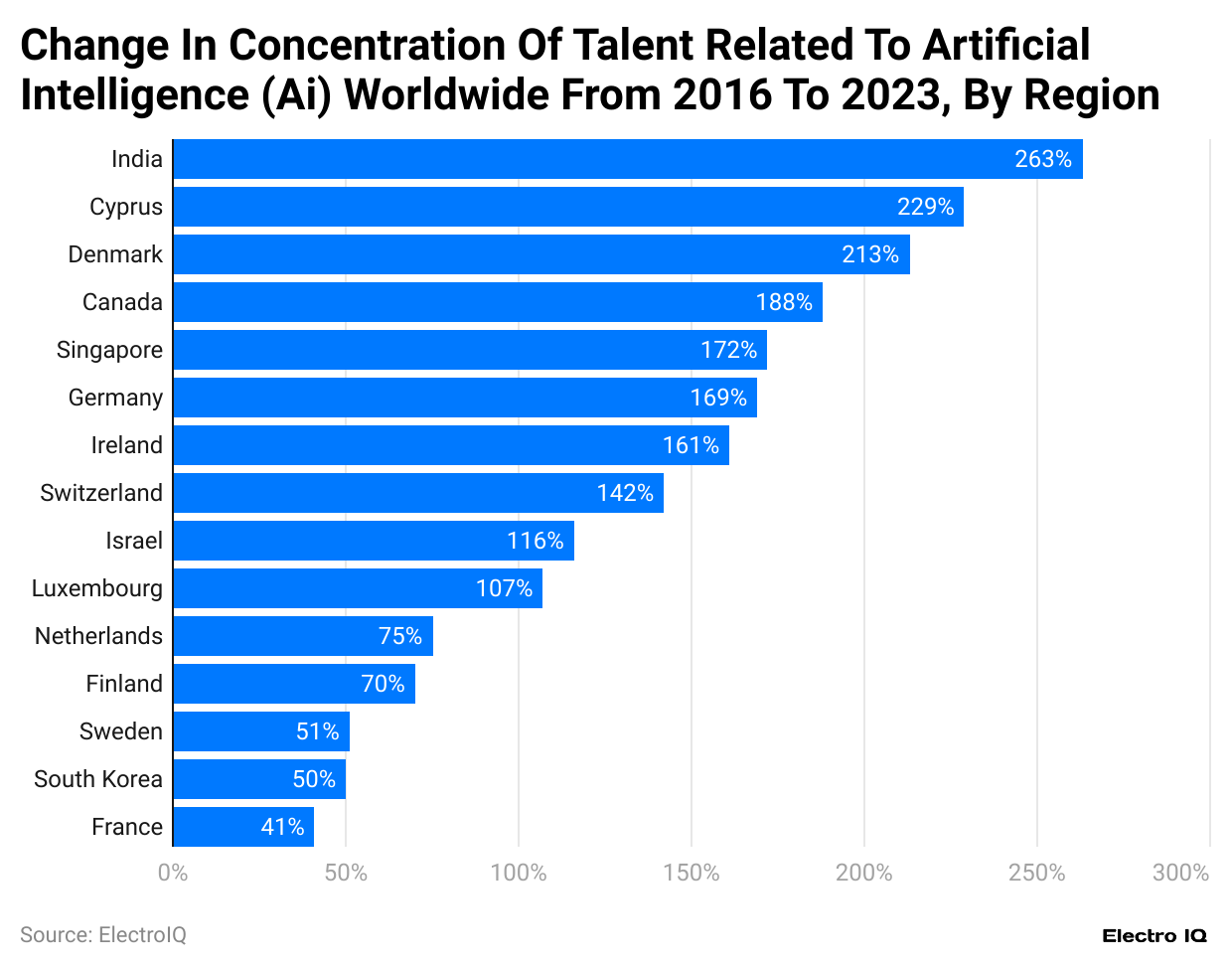
(Reference: statista.com)
- India experienced the most significant growth in artificial intelligence (AI) talent concentration, increasing by 263% from 2016 to 2023.
- Cyprus and Denmark also saw substantial increases in AI talent concentration, with gains of 229% and 213% respectively.
- Canada, Singapore, and Germany reported changes of 188%, 172%, and 169% in AI talent concentration.
- Ireland, Switzerland, and Israel observed growth rates of 161%, 142%, and 116% in AI talent concentration.
- Luxembourg, The Netherlands, Finland, and Sweden demonstrated increases of 107%, 75%, 70%, and 51%.
- South Korea and France rounded out the list with AI talent concentration growth of 50% and 41%.
AI Talent Concentration By Region
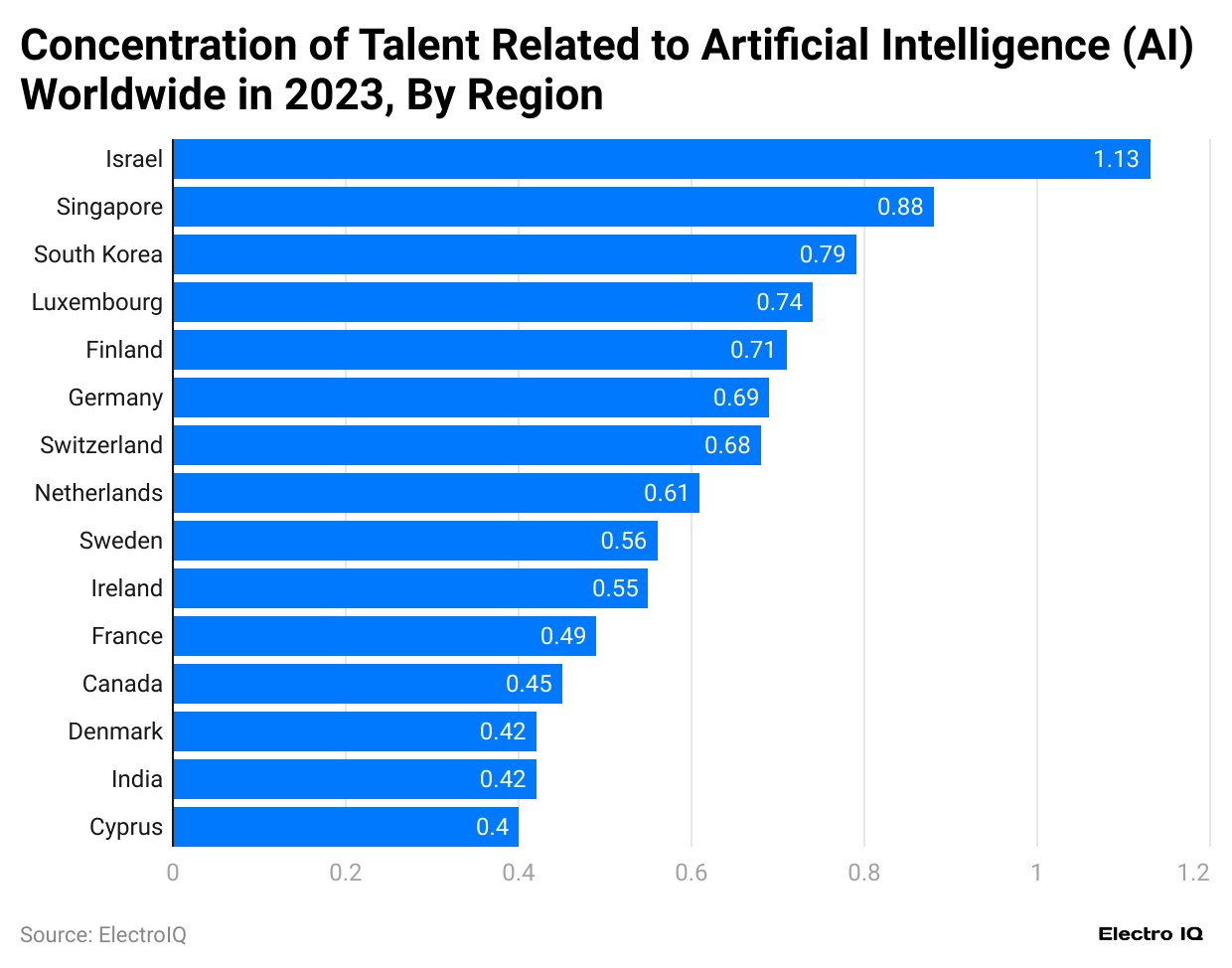
(Reference: statista.com)
- As of 2023, Israel leads the world in AI talent concentration, with 1.13% of LinkedIn users exhibiting AI skills.
- Singapore follows with an AI talent concentration of 0.88%.
- South Korea features an AI talent concentration of 0.79%.
- Luxembourg and Finland show AI talent concentrations of 0.74% and 0.71%, respectively.
- Germany and Switzerland have concentrations of 0.69% and 0.68%.
- The Netherlands reports a 0.61% concentration, while Sweden and Ireland have 0.56% and 0.55%.
- France’s AI talent concentration stands at 0.49%.
- Canada’s is noted at 0.45%.
- Both Denmark and India register a 0.42% concentration in AI talent.
- Cyprus rounds out the list with 0.40%.
Challenges With AI Tools
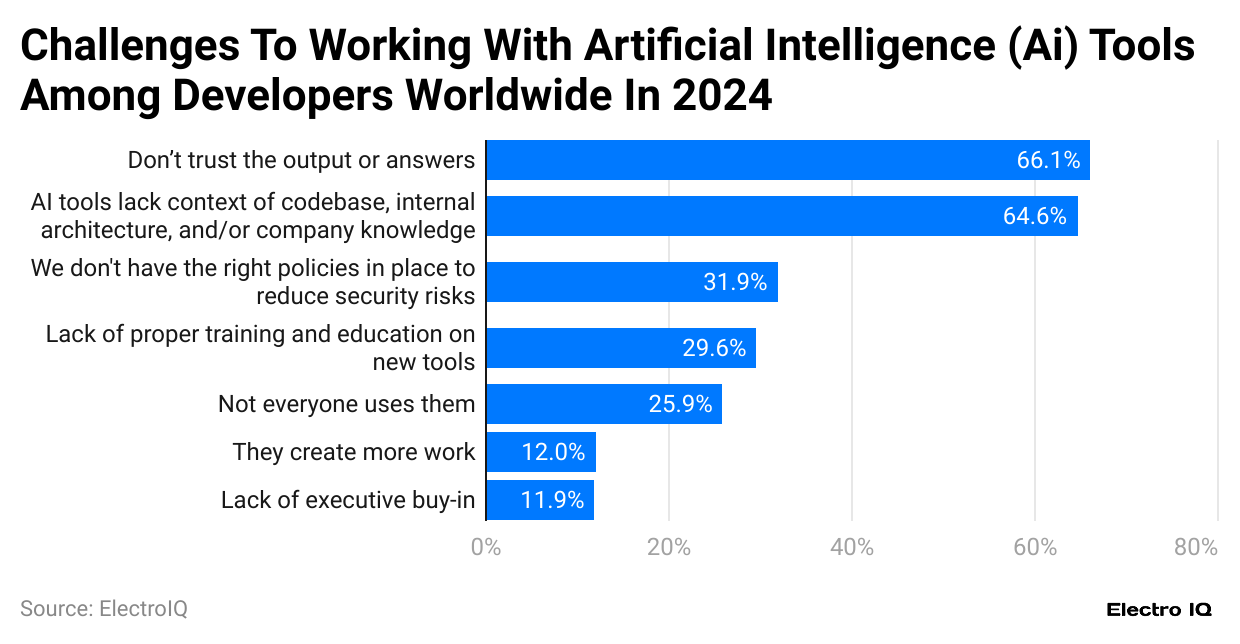
(Reference: statista.com)
- The primary challenge of AI tools in workplaces, as identified by 66.1% of respondents, is a need for greater trust in the outputs or answers provided by these tools.
- A significant 64.6% of respondents believe AI tools require a deeper understanding of the codebase and internal architecture.
- Concerns about inadequate policies to mitigate security risks are noted by 31.9% of respondents.
- Enhanced training and education on new tools are suggested by 29.6% of respondents to improve the effectiveness of AI tools.
- Only 25.9% of respondents currently utilize AI tools.
- An increase in workload due to AI tools is reported by 12% of respondents.
- Interest from executives in adding more AI tools is indicated by 11.9% of respondents.
AI Usage at Work
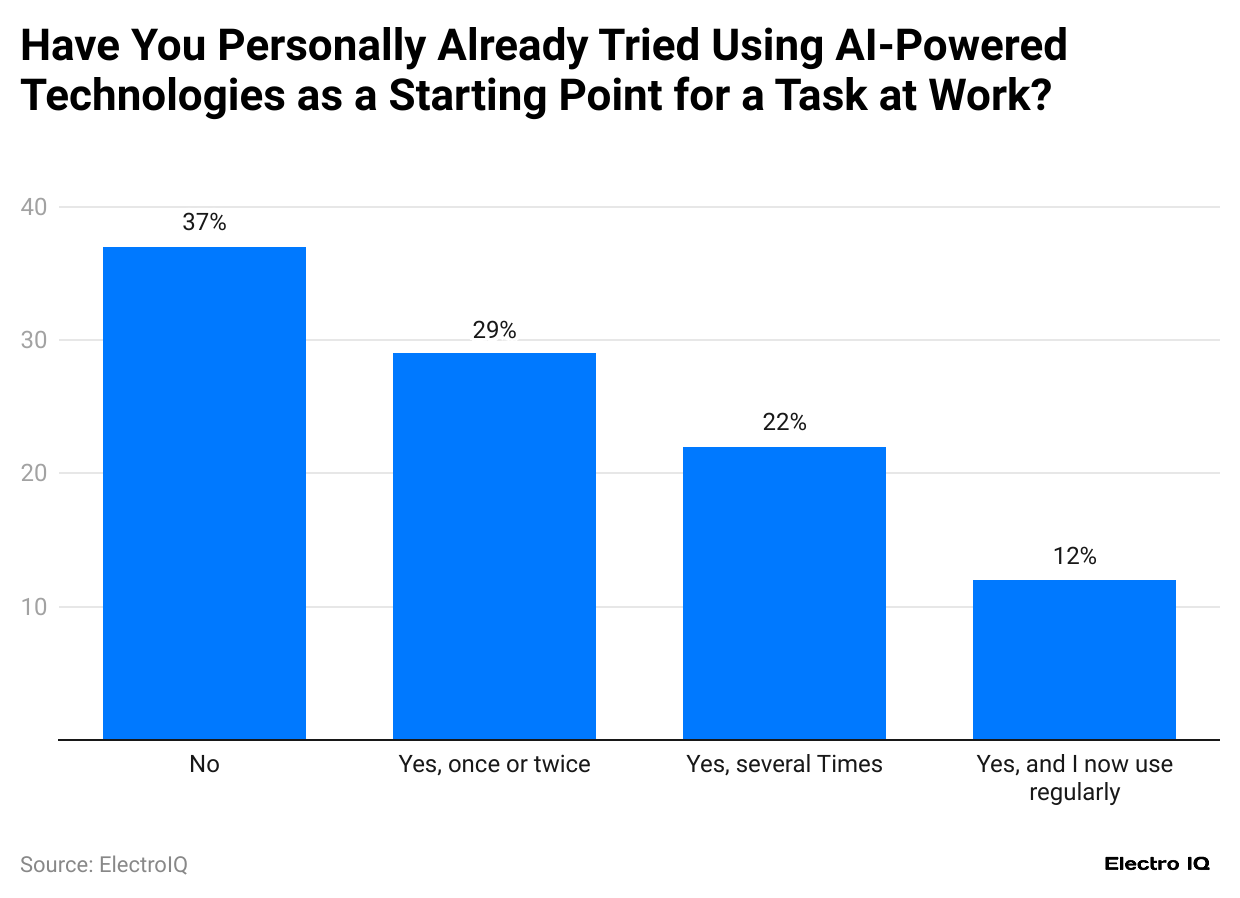
(Reference: statista.com)
- Stats On AI Replacing Jobs show that 37% of respondents need to start using AI-powered technologies.
- 29% of respondents use AI-powered technologies once or twice at work.
- 22% of respondents use AI tools several times.
- 12% of respondents use AI technologies regularly
Salaries of IT Executives
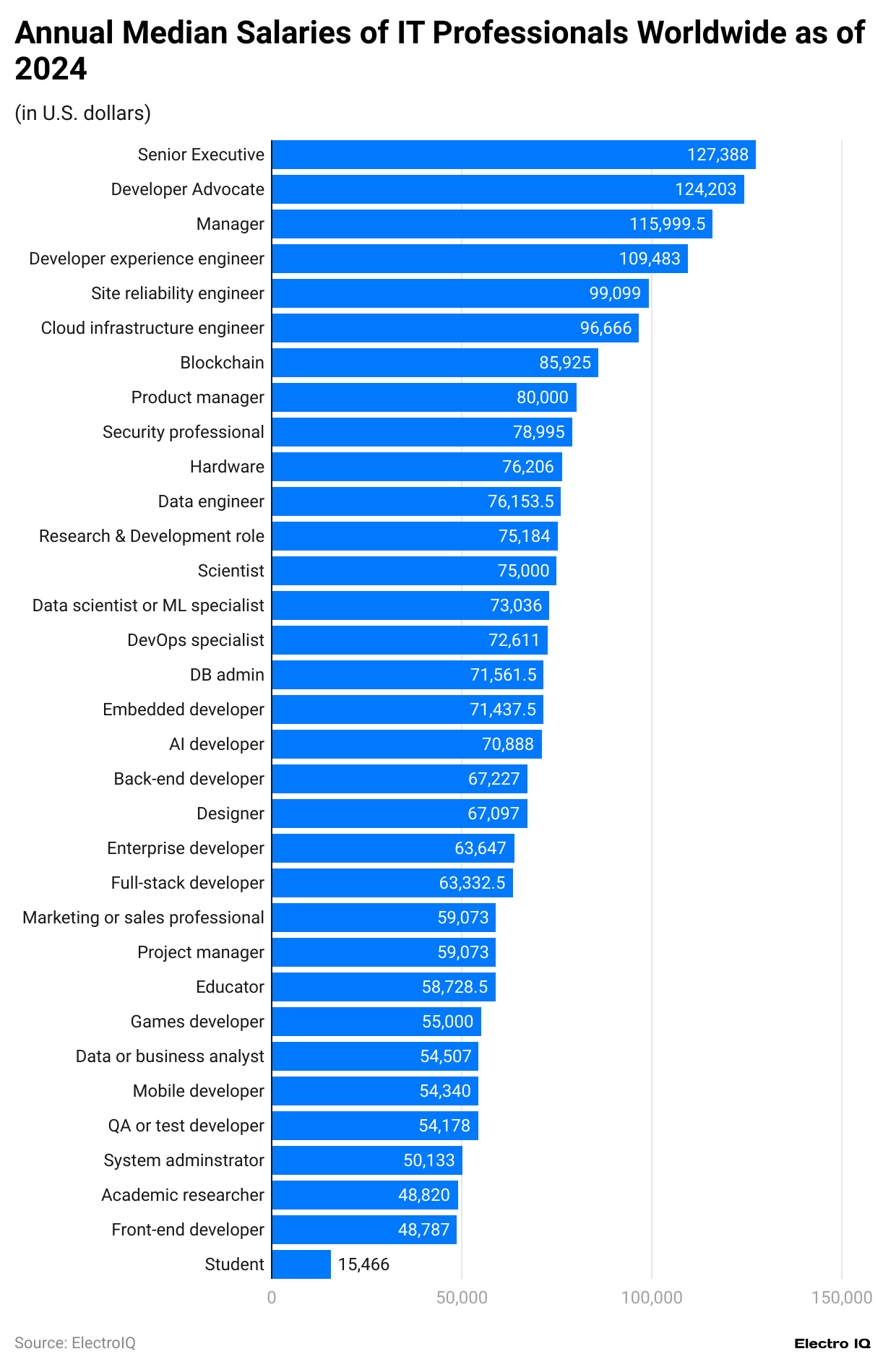
(Reference: statista.com)
- Senior executives in the IT industry reported the highest total annual compensation with a median salary of USD 127,388 in 2024.
- Developer advocates earned a median annual salary of USD 124,203.
- Blockchain professionals received a median salary of USD 85,925.
- Product managers were compensated with a median annual salary of USD 80,000.
- Security professionals had a median salary of USD 78,995.
- Hardware engineers earned USD 76,206 annually.
- Data engineers received a median annual compensation of USD 76,153.5.
- Research and development roles had a median annual salary of USD 75,184.5.
- Scientists earned a median salary of USD 75,000.
- Data scientists or machine learning specialists had a median salary of USD 73,036.
- DevOps specialists received USD 72,611 annually.
- Database administrators earned a median salary of USD 71,561.5.
- Embedded developers were paid a median annual salary of USD 71,437.5.
- AI developers received USD 70,888 annually.
- Back-end developers earned a median salary of USD 67,227.
- Designers received USD 67,097 annually.
- Enterprise developers had a median annual salary of USD 63,647.
- Full-stack developers earned USD 63,332 annually.
- Marketing or sales professionals and project managers each had a median salary of USD 59,073.
- Educators received a median annual salary of USD 58,728.5.
- Game developers earned USD 55,000 annually.
- Data or business analysts had a median salary of USD 54,507.
- Mobile developers received USD 54,340 annually.
- QA or test developers earned a median salary of USD 54,178.
- System administrators had a median annual salary of USD 50,133.
- Academic researchers earned USD 48,820 annually.
- Front-end developers received USD 48,787 annually.
- Students reported the lowest earnings with a median annual compensation of USD 15,466.
Most Used AI Search Engine Tool
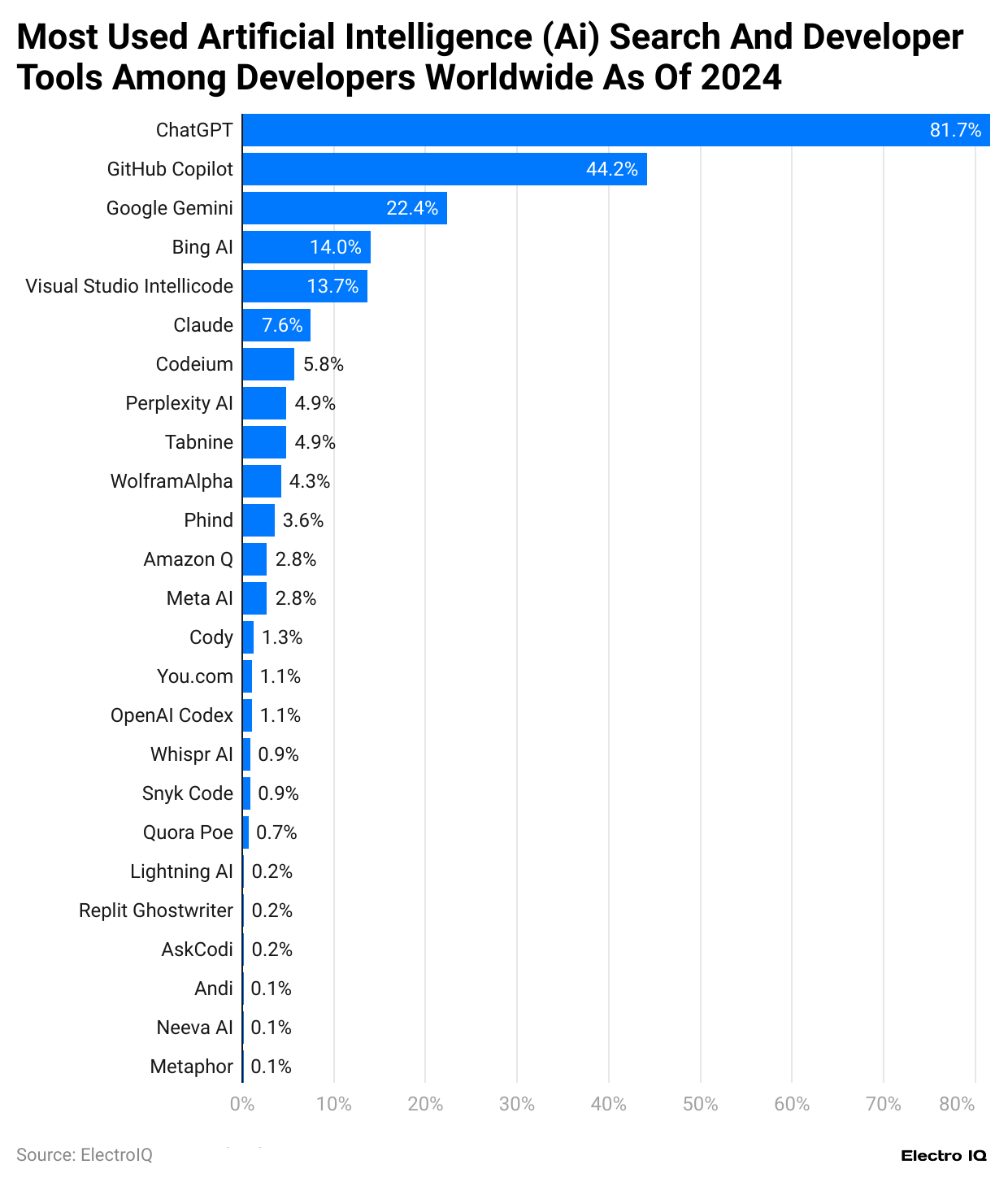
(Reference: statista.com)
- In 2024, OpenAI’s ChatGPT emerged as the leading AI tool among developers, with an 82% regular usage rate.
- GitHub Copilot followed, utilized by 44% of developers.
- Google Gemini was used by 22% of developers.
- Bing AI and Visual Studio IntelliCode, both Microsoft products, had usage rates of 14% and 13.7%, respectively.
- Claude was favored by 7.6% of developers.
- Codium saw a usage share of 5.8%.
- Both Perplexity AI and Tabnine recorded usage shares of 4.9%.
- WolframAlpha continued to have a stable user base, with a 4.3% usage share.
- Phind, Amazon Q, and Meta AI each accounted for 3.6%, 2.8%, and 2.8% respectively.
- Lesser-used tools included Cody, com, and OpenAI Codex, each hovering around usage shares of 1.1% to 1.3%.
- Tools like Whisper AI and Snyk Code were used by approximately 0.9% of developers.
- Quora Poe, Lightning AI, Replit Ghostwriter, AskCodio, and newer entries like Andi, Nova AI, and Metaphors had minimal uptake, each under 1%.
Jobs AI Can’t Replace Statistics
- Less than 5% of occupations can be entirely automated with existing AI technology, as highlighted by McKinsey.
- 60% of occupations may experience wage pressure from AI, which can automate significant tasks within these roles.
- A mere 0.4% of the total wages in the US are paid for vision-based tasks that AI could economically replace, based on MIT findings.
- Computer-vision AI could automate tasks representing just 1.6% of wages for non-agricultural workers in the US, but it would be cost-prohibitive to replace more than 23% of these wages with AI.
- 40% of jobs in emerging markets are susceptible to AI automation, according to the International Monetary Fund (IMF).
- In contrast, just 26% of jobs in low-income countries are exposed to AI automation.
- A substantial 63% of business leaders, as surveyed by the Centre for Economic Policy Research (CEPR), believe AI will not affect employment rates in high-income countries.
- Conversely, 27% of business leaders anticipate that AI will increase unemployment in these countries.
- According to Pew, 23% of workers are engaged in jobs least likely to be affected by AI, such as nannies, where key tasks are resistant to automation.
Most Paying Technology Among Developers
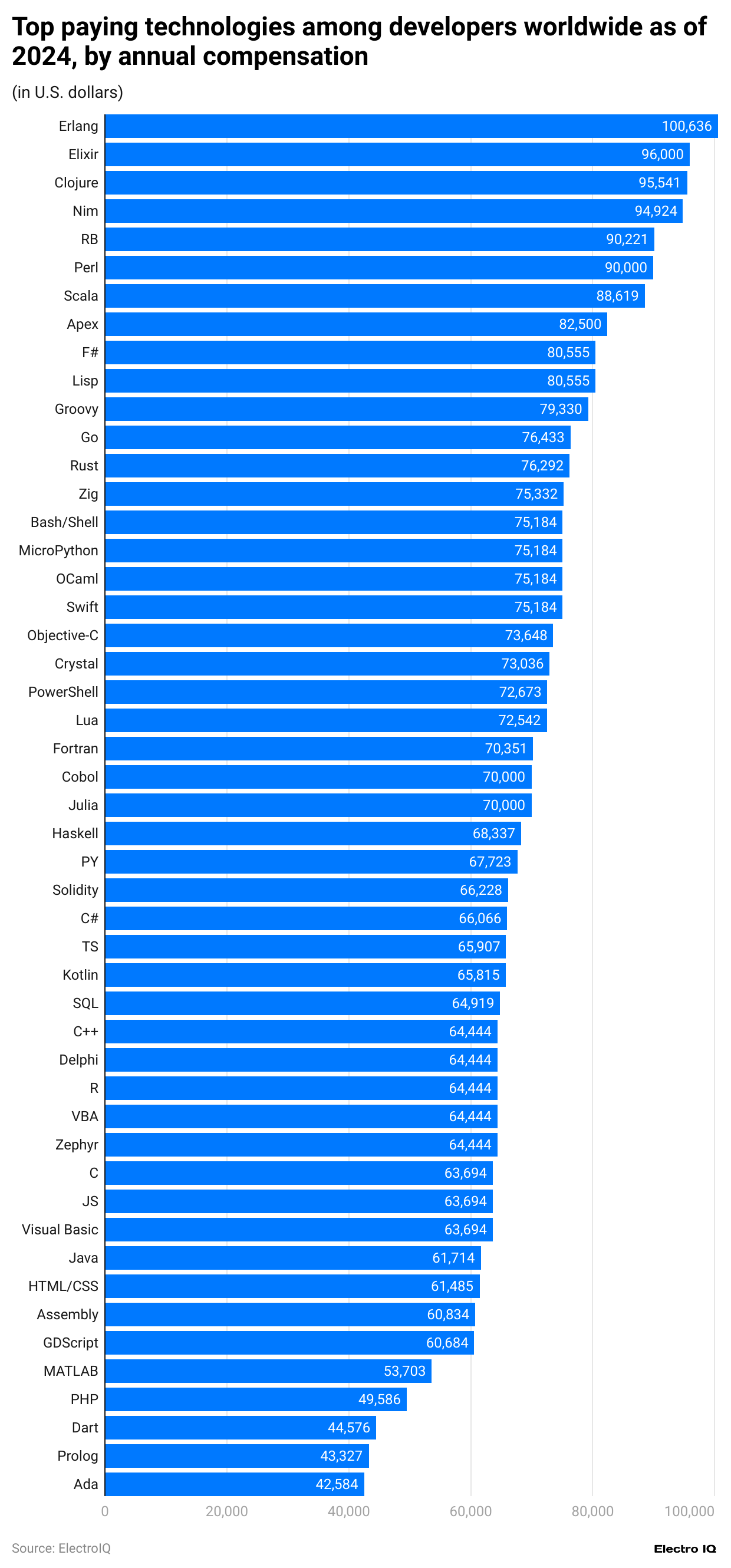
(Reference: statista.com)
- Developers using Erlang earn the highest median annual compensation, surpassing USD 100,636.
- Elixir developers receive an annual compensation of USD 96,000.
- Clojure developers earn USD 95,541 annually.
- Developers skilled in Nim are compensated with USD 94,254 each year.
- F# developers receive USD 90,221 annually.
- Developers proficient in Red earn USD 90,000 per year.
- Scala developers have an annual compensation of USD 89,619.
- Lisp developers receive USD 82,500 each year.
- Pike developers are compensated with USD 80,555 annually.
- Groovy developers earn USD 78,310 per year.
- Rust developers have an annual compensation of USD 78,232.
- Zig and Bash Shell developers earn around USD 78,150 and USD 78,154, respectively.
- Developers proficient in MonkeyPatch and CoffeeScript both receive USD 75,184 annually.
- Swift and Objective-C developers earn USD 71,846 each year.
- Developers skilled in Crystal and PowerShell are compensated with USD 71,065 and USD 71,057, respectively.
- Lua developers earn USD 73,450 annually.
- Fortran developers receive USD 73,051 each year.
- Cobol developers have an annual compensation of USD 70,000.
Conclusion
The AI revolution is not a distant future but an unfolding reality transforming the global workforce. Stats On AI Replacing Jobs show a nuanced landscape where technological skills, adaptability, and AI literacy are becoming crucial career currencies. While challenges exist—such as trust in AI outputs and integration complexities—the opportunities are immense. Professionals across industries are witnessing a significant shift, with AI creating new roles, enhancing productivity, and reshaping traditional job descriptions.
Hence, the most successful professionals will be those who view AI as a collaborative tool, leveraging its capabilities to enhance human creativity, problem-solving, and innovation.
FAQ.
The AI market is expected to grow from $135.93 billion in 2023 to $826.73 billion by 2030.
Israel has the highest AI talent concentration, with a rate of 1.13.
81.7% of developers use ChatGPT.
77% of respondents believe early-career talent will receive better responsibilities due to AI skills.
- Trust in output (66.1%)
- Need for more context (64.6%)
Entang offers the highest annual compensation, averaging $100,636.
84% of respondents see AI as having a positive impact on business operations.
C/C++ is the fastest-growing skill, with a growth rate of 594.45%.
12% of workers use AI technologies regularly, and 37% need to start using them.

Maitrayee Dey has a background in Electrical Engineering and has worked in various technical roles before transitioning to writing. Specializing in technology and Artificial Intelligence, she has served as an Academic Research Analyst and Freelance Writer, particularly focusing on education and healthcare in Australia. Maitrayee's lifelong passions for writing and painting led her to pursue a full-time writing career. She is also the creator of a cooking YouTube channel, where she shares her culinary adventures. At Smartphone Thoughts, Maitrayee brings her expertise in technology to provide in-depth smartphone reviews and app-related statistics, making complex topics easy to understand for all readers.

